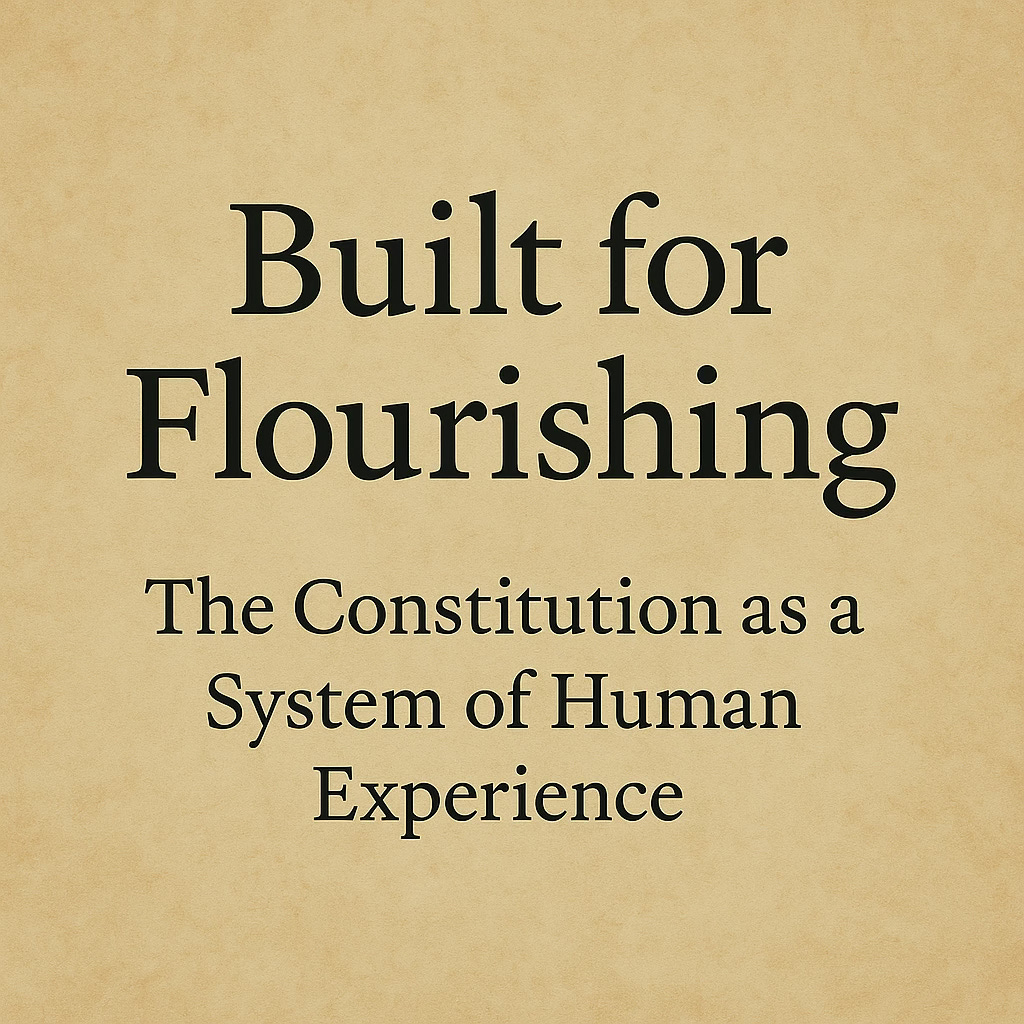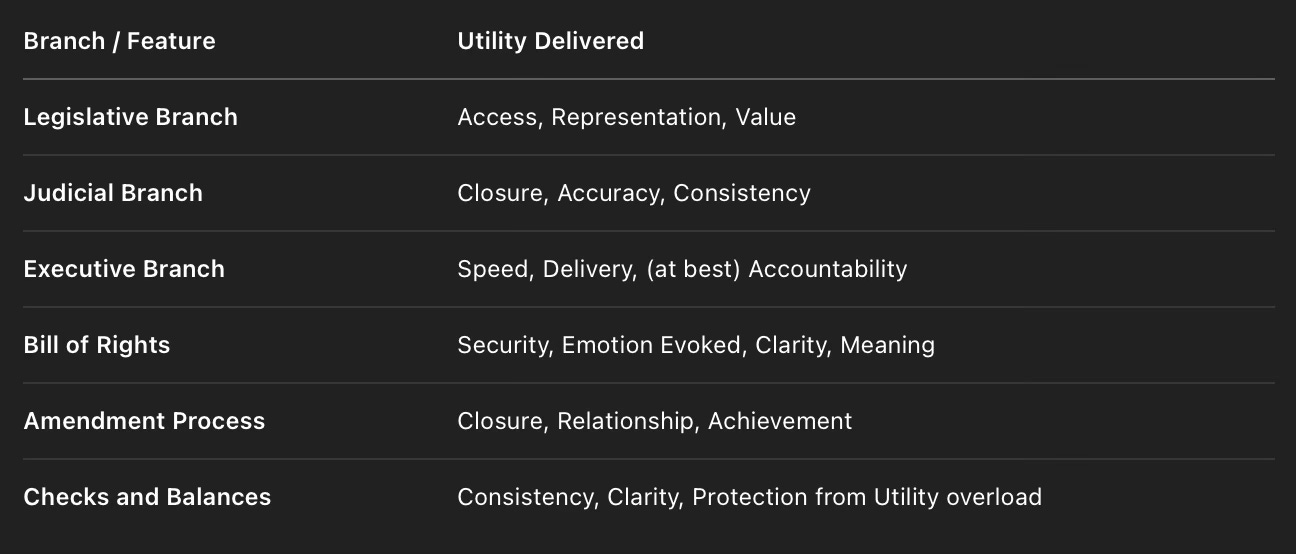From the THX Series Hub: Neurodivergence & the Founding of a Nation
After the rupture of the Declaration came the architecture of the Constitution.
Where the Declaration said “we deserve better,” the Constitution asked, “how do we make better last?”
It was a framework—not just of governance—but of trust-building, dignity-protecting, and experience-shaping design.
And like any system, its success depends on how well it delivers on human expectations.
Let’s look at it not as a sacred document, but as a utility blueprint—an early attempt to hardwire flourishing into national life.
A System of Delivery, Not Just Ideas
The Constitution emerged from trauma—years of war, distrust of kings, and fear of mob rule. The framers weren’t idealists. They were designers.
What they built was a system meant to:
Distribute power (to avoid tyranny)
Enable resolution (courts, laws, amendments)
Protect individuals from state violence (rights, process, justice)
Guarantee clarity and consistency (checks, balances, codified structure)
In short: it was designed to deliver key human utilities—Security, Clarity, Access, Closure, and Consistency—at scale.
The Constitution as a Utility Map
Let’s reframe the Constitution through the lens of the 12 Utilities:
The design was never perfect—but the goal was bold: create a system that earns loyalty by meeting needs.
It was a civic version of the Admiration Equation:
Deliver beyond expectations, and you earn legitimacy.
Fail long enough, and you invite revolt.
PERMAH as the Goal of Good Government
If the Constitution was the system, PERMAH was the emotional outcome it hoped to protect:
Positive Emotion → Freedom from fear, freedom of speech
Engagement → Participation in democracy, accessible institutions
Relationships → Representation, shared identity, civic dialogue
Meaning → Voting, rights, purpose-driven civic life
Achievement → Legal protection, property, education, pursuit of growth
Health & Wellbeing → Safe communities, public investment, fairness
Good government doesn’t just maintain order. It cultivates flourishing.
The Constitution can be read as a national attempt to move from trauma to trust—from authoritarian memory to mutual accountability.
What Happens When the System Is Dismantled
But systems are only as strong as the people who uphold them.
Today, we are watching leaders exploit ambiguities in speed, enforcement, and executive power to outrun the very checks designed to stop them.
Laws are ignored.
Courts are stacked.
Orders are disobeyed.
Rights are revoked or reinterpreted through cruelty.
This is not failure of the document—it is the willful refusal to deliver on its promise.
When Speed is used to evade Closure...
When Access is denied while Security is weaponized...
When Emotion Evoked becomes fear instead of hope…
The system does not break.
It becomes something else.
A Human Experience Lens on Constitutional Crisis
We usually talk about "Constitutional crises" in legal terms. But what if we tracked them through experience instead of law?
What if we asked:
How many people feel safe under this system?
How many feel seen? Respected? Protected?
Where are we failing to provide Access, Closure, or Clarity?
Those aren’t legal questions. They’re moral ones.
And if the answers reveal pain, confusion, or fear—then the crisis has already begun.
Our Responsibility Now
We are not just inheritors of a document.
We are co-designers of its next version—with every vote, law, protest, and story we tell.
The Constitution cannot protect flourishing on its own.
That was never the promise.
The promise was that we would uphold it—as a tool for justice, not a shield for cruelty.
So ask yourself:
Which utilities do you need restored?
Where do you see flourishing breaking down?
What part of the system are you willing to help repair—or redesign?

Interpretation:
The parchment texture and formal layout call back to the reverence of founding documents, but the phrase “Built for Flourishing” reframes the Constitution not as static law, but as a living, human-centered design. It reminds us that governance isn't sacred because it’s old—but because it was meant to deliver something better than fear: dignity, balance, and shared experience.




